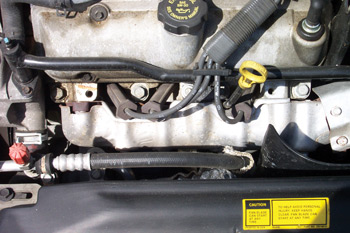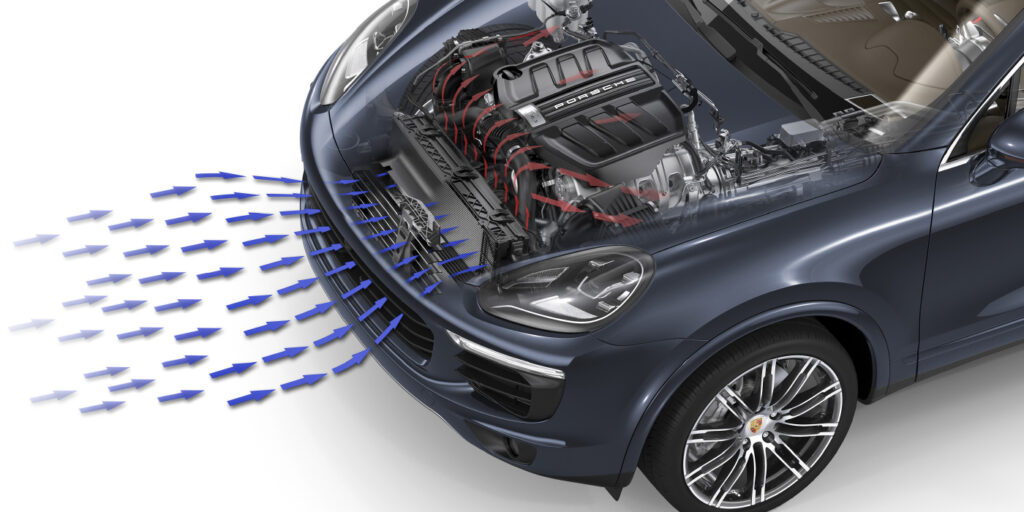 Ignition systems have changed a great deal in recent years, with coil-on-plug (COP) ignition systems being the most common setup on many late model engines. COP ignition systems have a single coil for each spark plug mounted on top of the plug. This setup eliminates the need for a spark plug wire and the troubles it can cause. Most other distributorless ignition systems (DIS) still have plug wires, as do older vehicles with distributors.
Ignition systems have changed a great deal in recent years, with coil-on-plug (COP) ignition systems being the most common setup on many late model engines. COP ignition systems have a single coil for each spark plug mounted on top of the plug. This setup eliminates the need for a spark plug wire and the troubles it can cause. Most other distributorless ignition systems (DIS) still have plug wires, as do older vehicles with distributors.
Plug wires are necessary to carry high voltage from the ignition coil to the spark plug. We’re talking firing voltages that can range from 5,000 volts to as much as 50,000 volts! That’s a lot of electrical energy to keep contained inside a wire.
Spark plug wires are vulnerable to heat, vibration, aging, moisture and physical damage from mishandling during installation or removal. Issues include:
•Plug wires may burn through and short out if they lay against a hot exhaust manifold (depending on the heat resistance of the outer jacket around the wire).
•Unsupported wires can vibrate and rub against sharp edges, causing the insulation to wear through and short out the wire.
•The carbon conductor that carries voltage inside some types of wire can degrade after years of use, causing an increase in resistance that may cause misfires.
•Boots that seal the ends of the wires can be deformed or pulled loose, allowing moisture to sap away voltage before it reaches the spark plug.
•The metal clips that attach the ends of the wires to the spark plugs and coils or distributor cap can also loosen or be damaged by vibration or improper handling.
•A different type of misfire called “crossfire” may occur if two plug wires are routed parallel to each other and the two cylinders follow each other in the firing order. The magnetic field around one wire induces a current in the second wire, causing the other spark plug to fire prematurely.
Misfires are bad news because it causes a loss of performance and fuel economy, and a big jump in emissions. On late model OBD II vehicles, it will also turn on the Check Engine light and misfire codes. So if wire problems are causing misfires, it’s time to replace the wire set.
Most late model original equipment spark plug wire sets now use spiral-wound stainless steel mag wire. This type of construction has less internal resistance than carbon-core wires (only about 500 ohms/foot versus 5,000 ohms/foot with carbon-core wire). It uses inductance rather than resistance to suppress radio frequency interference (RFI). The result is a hotter spark with less voltage load on the ignition system. Mag wire can be recommended as an upgrade for older carbon core wires.
Some European imports use Fixed Resistor plug wires, which have a steel or copper metallic core with a fixed resistor in the plug boot to control RFI.
Other differences in plug wires include the thickness and type of insulation around the wire. Wire sizes may be 7mm, 8mm or larger. Thicker is typically better because it reduces the risk of voltage leaks. Wires with thicker insulation are typically used on high-output electronic ignition systems or on engines where the spark plugs have wider electrode gaps.
Premium wire sets typically use silicone or EPDM (Ethylene Propylene Diene Monomer) insulation around the core. There may be an inner layer of EPDM surrounded by an outer layer of silicone, or a double layer of silicone around the core. EPDM has a high dielectric rating that resists voltage leaks, and silicone can withstand high under-hood temperatures and retain its flexibility unlike some other materials that can melt or become hard and brittle as they age.
The insulation around the core may also be surrounded by additional reinforcement such as braided fiberglass, and there may be an outer covering or jacket on the wire such as EVA (Ethylene Vinyl Acetate), EPDM or silicone to provide additional thermal protection and abrasion resistance. Economy wire sets typically use less expensive insulation that may not be multi-layered or as thick, and does not provide the durability and reliability of a premium wire set.













